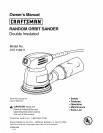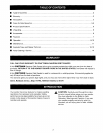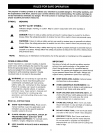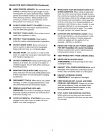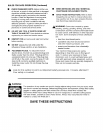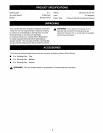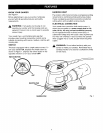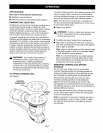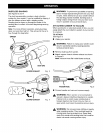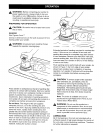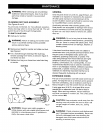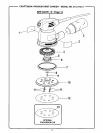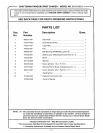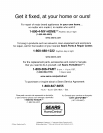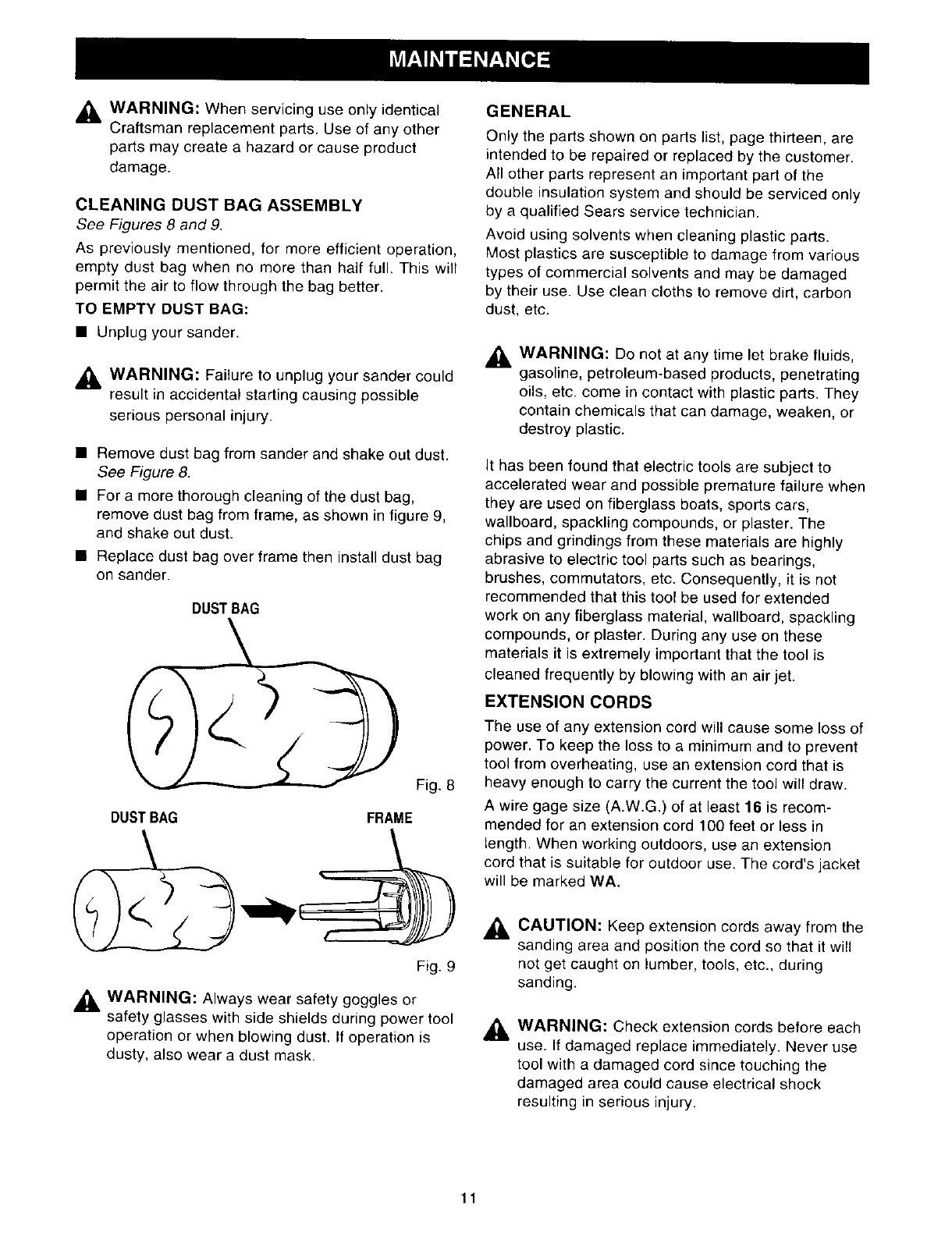
_L WARNING: When servicing use only identical
Craftsman replacement parts. Use of any other
parts may create a hazard or cause product
damage.
CLEANING DUST BAG ASSEMBLY
See Figures 8 and 9.
As previously mentioned, for more efficient operation,
empty dust bag when no more than half full. This will
permit the air to flow through the bag better.
TO EMPTY DUST BAG:
• Unplug your sander.
,_ WARNING: Failure to unplug your sander could
result in accidental starting causing possible
serious personal injury.
• Remove dust bag from sander and shake out dust.
See Figure 8.
• For a more thorough cleaning of the dust bag,
remove dust bag from frame, as shown in figure 9,
and shake out dust.
• Replace dust bag over frame then install dust bag
on sander.
DUSTBAG
Fig. 8
DUSTBAG FRAME
Fig. 9
,_ WARNING: Always wear safety goggles or
safety glasses with side shields during power tool
operation or when blowing dust. If operation is
dusty, also wear a dust mask.
GENERAL
Only the parts shown on parts list, page thirteen, are
intended to be repaired or replaced by the customer.
All other parts represent an important part of the
double insulation system and should be serviced only
by a qualified Sears service technician.
Avoid using solvents when cleaning plastic parts.
Most plastics are susceptible to damage from various
types of commercial solvents and may be damaged
by their use. Use clean cloths to remove dirt, carbon
dust, etc.
A
WARNING: Do not at any time let brake fluids,
gasoline, petroleum-based products, penetrating
oils, etc. come in contact with plastic parts. They
contain chemicals that can damage, weaken, or
destroy plastic.
It has been found that electric tools are subject to
accelerated wear and possible premature failure when
they are used on fiberglass boats, sports cars,
wallboard, spackling compounds, or plaster. The
chips and grindings from these materials are highly
abrasive to electric tool parts such as bearings,
brushes, commutators, etc. Consequently, it is not
recommended that this tool be used for extended
work on any fiberglass material, wallboard, spackling
compounds, or plaster. During any use on these
materials it is extremely important that the tool is
cleaned frequently by blowing with an air jet.
EXTENSION CORDS
The use of any extension cord will cause some loss of
power. To keep the loss to a minimum and to prevent
tool from overheating, use an extension cord that is
heavy enough to carry the current the tool will draw.
A wire gage size (A.W.G.) of at least 16 is recom-
mended for an extension cord 100 feet or less in
length. When working outdoors, use an extension
cord that is suitable for outdoor use. The cord's jacket
will be marked WA.
A
CAUTION: Keep extension cords away from the
sanding area and position the cord so that it will
not get caught on lumber, tools, etc., during
sanding.
A,
WARNING: Check extension cords before each
use. If damaged replace immediately. Never use
tool with a damaged cord since touching the
damaged area could cause electrical shock
resulting in serious injury.
11



